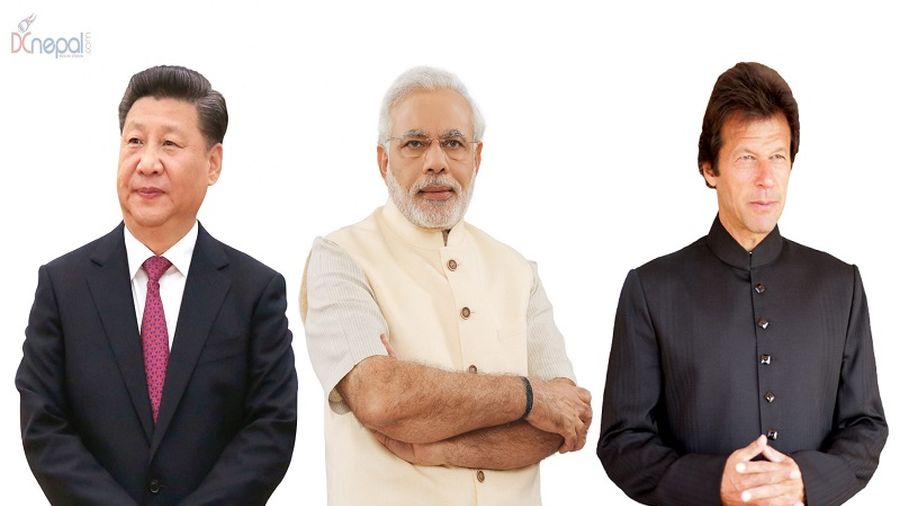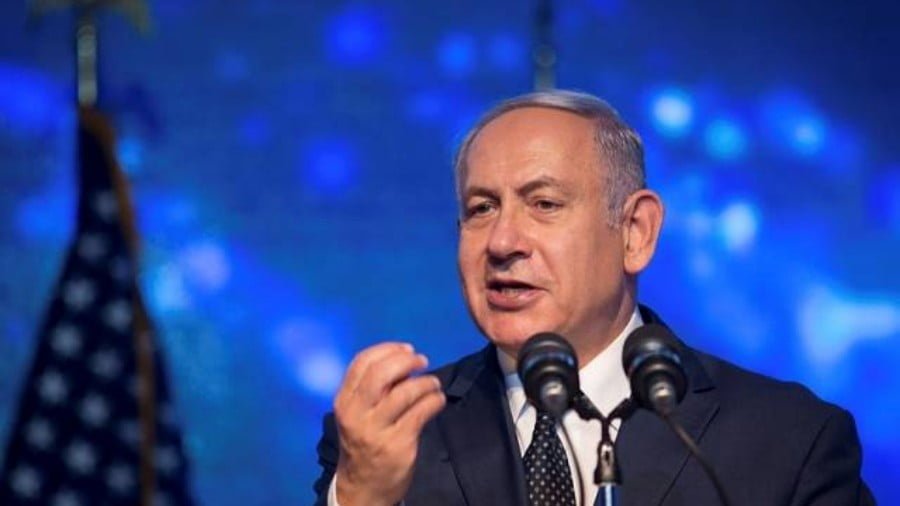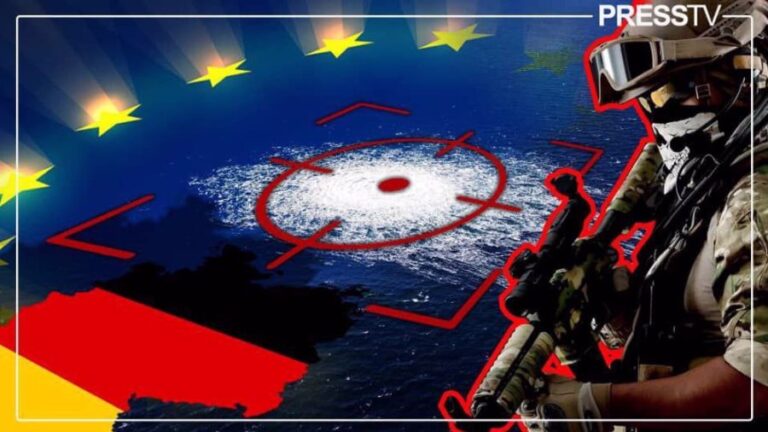Interpreting Putin’s Diplomacy With the Chinese, Indian, and Pakistani Leaders
Since first impressions tend to be the most influential even if they’re actually false like that which many Indians perceived due to Twitter’s politicized labeling of redfish and the three earlier identified American actors’ efforts to misportray the intention behind that outlet’s planned video, it’s crucial to clarify President Putin’s personal diplomacy with the Chinese, Indian, and Pakistani leaders. The purpose of this piece is thus to explain the author’s interpretation of Russian grand strategy with those three countries in order to counteract the US’ propaganda about its motivations.
Russian President Vladimir Putin visited India to meet with Prime Minister Narendra Modi in early December, just got back from Beijing after meeting with Chinese President Xi Jinping, and will soon host Pakistani Prime Minister Imran Khan in Moscow. This flurry of personal diplomacy with some of Eurasia’s most important leaders has led to a lot of questions about Russian grand strategy and even some speculation about whether it might have ulterior motives.
The latter was prompted by Ruptly-funded redfish’s (stylized with a lower-case r) planned video on Kashmir, which provoked plenty of confusion among many Indians after they were misled by Twitter’s politicized labeling of that platform as “Russia state-affiliated media”. The author released a three–part article series clarifying everything about this scandal and redfish itself just announced that it’ll postpone the video’s release. They also denied that it was related to Russia’s relations with China or Pakistan.
Nevertheless, some American forces have attempted to exploit that scandal in an attempt to drive a wedge between the special and privileged Russian-Indian Strategic Partnership. Examples of this include the McCarthyite “Prop Or Not” project by an anonymous individual that gained infamy after the 2016 elections for declaring dozens of websites to supposedly be “Russian propaganda”, Derek M. Grossman from the fiercely anti-Russian RAND Corporation think tank, and Heritage Foundation’s Jeff M. Smith.
These obvious efforts by external actors to meddle in Russian-Indian relations partially explain why redfish felt compelled to clarify that their planned video was not “a clear sign of Russia and China unifying at the expense of India in the wake of Presidents Xi Jinping and Vladimir Putin’s meeting on the same day we published the trailer, or that it was timed ahead of Putin’s meeting with Pakistani Premier Imran Kahn – all evidence of Russia moving against India.”
Since first impressions tend to be the most influential even if they’re actually false like that which many Indians perceived due to Twitter’s politicized labeling of redfish and those three American actors’ efforts to misportray the intention behind that outlet’s planned video, it’s crucial to further clarify President Putin’s personal diplomacy with the Chinese, Indian, and Pakistani leaders. The purpose of this piece is thus to explain the author’s interpretation of Russian grand strategy with those three countries.
The two most important of these three for Moscow are obviously China and India, whose interplay of importance figures prominently in the Kremlin’s grand strategic calculations as the author explained in a recent piece about that here. To summarize, the Russian-Chinese Strategic Partnership serves as the joint engine for accelerating the emerging Multipolar World Order while the Russian-Indian Strategic Partnership aims to maintain balance in Eurasia during the interim bi-multipolarity period.
Russia and China are synchronizing their Eurasian Economic Union (EAEU) and Belt & Road Initiatives (BRI) respectively while Russia and India are informally attempting to jointly assemble a new Non-Aligned Movement (“Neo-NAM”) for creating a third pole of influence in the bi-multipolar world order. For further clarification about recent developments in Russian-Indian relations, readers are encouraged to read the author’s latest analyses at the Russian International Affairs Council (RIAC) think tank.
These are his insights into “The Twists & Turns Of Russian-Indian Relations Over The Past Few Years” and “The New Cold War’s Evolving Strategic Dynamics In South Asia”. Furthermore, his recent response to Rajesh Rajagopalan’s opinion piece at India’s ThePrint titled “No, Russia-India chasm isn’t deepening with Ukraine. It counters US’ divide-and-rule ploy” should also be useful for interested readers to review. All of these pieces argue that Russian-Indian relations are rock-solid and mutually beneficial.
It’s the reader’s right whether or not to agree with the author’s assessment of Russian grand strategy vis-à-vis China and India but they should still at the very least acknowledge this interpretation if they sincerely desire to attempt to understand that Great Power’s complicated balancing act between both. The same should also be said for his following interpretation of Russian-Pakistani relations and their relevance to the aforementioned RIC triangle. The author will now cite some of his pertinent works:
* 28 January 2020: “This Five-Phase Strategy Can Strengthen Russian-Pakistani Trade Ties”
* 3 June 2020: “Pakistan’s Role In Russia’s Greater Eurasian Partnership”
* 22 December 2020: “The Pakistan Stream Gas Pipeline Raises Russia’s Stakes In South Asia”
* 4 February 2021: “Russian-Pakistani Relations Are Moving In The Right Direction”
* 12 February 2021: “Why Did The Russian Ambassador To Pakistan Describe His Country As A ‘Developing’ One?”
* 20 February 2021: “What Do Pakistan-Russia Ties Mean For India? A 2015 Russian Paper May Have The Answers”
* 22 March 2021: “What Is Pakistan’s Multipolar Grand Strategy?”
* 12 April 2021: “How Russia Successfully Restored Balance To Its South Asian Grand Strategy”
* 15 April 2021: “Russia Isn’t Hyphenating India-Pakistan But Balancing Both For Its Win-Win Plan”
* 7 May 2021: “Interview: Russia’s Blank Cheque To Pakistan – Fact Or Fiction?”
* 24 June 2021: “The Geostrategic Challenges Of Russia’s ‘Ummah Pivot”
* 2 July 2021: “Understanding The Dynamics Of Pak-Russia Relations”
* 14 July 2021: “Russia’s ‘Ummah Pivot’: Opportunities & Narrative Engagement”
* 20 July 2021: “Russia’s Endorsement Of Central Asia-South Asia Connectivity Advances Multipolarity”
* 20 July 2021: “Pakistan’s New Geo-Economic Grand Strategy Is Multi-Alignment At Its Finest”
* 26 July 2021: “Please Update Your Analyses: Korybko Responds To Haqqani, Kugelman, And Pantucci”
* 11 August 2021: “Russia Must Urgently Prioritize Formulating An Official Indo-Pacific Policy”
* 25 August 2021: “Russia & The Taliban: From Narrative Challenges To Opportunities”
* 27 August 2021: “The Khan-Putin Call Is A Defining Moment In Pak-Russian Relations”
* 5 September 2021: “Why Aren’t All These New Alt-Media ‘Experts’ On Afghanistan Talking About PAKAFUZ?”
* 10 September 2021: “What Did The Pakistani Ambassador To Moscow Say To Russian Media?”
* 27 September 2021: “Comparing The Contours Of Russia’s Ummah Pivot In Syria & Afghanistan”
* 16 December 2021: “What’s The Most Realistic Assessment Of Russian-Pakistani Relations?”
* 29 December 2021: “Pakistan Can Optimize Its Eurasian Balancing Act Through PAKAFUZ”
* 6 January 2022: “Will Russia’s S-400 Deal With India Significantly Affect Its Ties With Pakistan?”
* 12 January 2022: “Russia’s Separately Planned Drills With India & Pakistan Are Pragmatic”
* 16 January 2022: “Russia Can Play An Important Role In Implementing Pakistan’s National Security Policy”
* 17 January 2022: “Pakistan’s National Security Policy Prioritizes Reforms & Connectivity”
* 20 January 2022: “The Pakistan Stream Gas Pipeline Might Herald Larger Russian Regional Ambitions”
* 24 January 2022: “India & Pakistan Will Serve As Pressure Valves For Balancing New Cold War Tensions”
To summarize this admittedly long list of very detailed materials from over the past two years, Russian-Pakistani relations began to significantly strengthen in response to shared security threats stemming from ISIS-K’s emergence in Afghanistan. They then eventually diversified to the point of high-level energy and connectivity cooperation via the Pakistan Stream Gas Pipeline (PSGP) and February 2021’s agreement to build a Pakistan-Afghanistan-Uzbekistan (PAKAFUZ) railway that might connect to Russia.
Just like Russia & China’s grand strategies are complementary through the synchronization of the EAEU & BRI and Russia & India’s converge through the Neo-NAM, so too do Russia & Pakistan’s grand strategies align through the former’s Greater Eurasian Partnership (GEP) and the latter’s new geo-economic focus. Pakistan was the last piece of Russia’s GEP puzzle since it’s the final one of Moscow’s former Eurasian rivals that it finally entered into a meaningful rapprochement with.
Moreover, Pakistan occupies a prominent role in Russia’s “Ummah Pivot” that’s predicated on prioritizing the comprehensive improvement of relations with majority-Muslim countries. The “Ummah Pivot”, including its Pakistani component, and the Neo-NAM with India are both envisioned as complementarily maintaining Russia’s friendly, gentle, and non-hostile balancing act with China across Eurasia over the course of the 21st century. None of these vectors are aimed against any third party.
Rather, they all come together to create the three pillars of Russia’s Eurasian grand strategy. The EAEU’s synchronization with BRI accelerates the emerging Multipolar World Order, the Neo-NAM with India maintains balance across the supercontinent during the interim bi-multipolarity period, while the Pakistani component of Russia’s “Ummah Pivot” focusing on the PSGP and PAKAFUZ helps Moscow’s fine-tune its balancing act between China and India. Everything comes together very smoothly, in fact.
It’s in China’s interests for Russian-Indian ties to continue comprehensively strengthening so as to counteract the US’ pernicious divide-and-rule attempts to turn that South Asian Great Power into an anti-Chinese vanguard state. Similarly, the comprehensive strengthening of Russian-Chinese relations is in India’s interests since it provides a positive pressure valve for the People’s Republic in the face of the US-led West’s aggressive efforts to “contain” it and thus destabilize Eurasia in the process.
As for the comprehensive strengthening of Russian-Pakistani relations, this too aligns with Indian grand strategic interests since it increases Moscow’s presence in South Asia and helps reduce Islamabad’s perceived disproportionate dependence on China that’s made New Delhi very uncomfortable lately. Additionally, the geopolitical balancing, strategic diversification, and geo-economically driven bases of Russian-Pakistani relations are mutually beneficial and can help Pakistan develop even faster.
That would be to India’s benefit too since poverty is a regional plague that holds all of South Asia back. It also makes some people more susceptible to radical influences that could in turn manifest themselves in very unpredictable and ultimately destabilizing ways. It’s of urgent importance for Pakistan to accelerate its geo-economic development vision as soon as possible since its success will benefit all South Asians the same as India’s similar such success would do so as well with respect to its related policies.
Considering all of this, it’s very likely that President Putin’s upcoming meeting with Prime Minister Khan will incorporate some of these grand strategic commonalities between their two countries, particularly their energy and connectivity cooperation as well as continued diplomatic efforts to manage the ongoing Afghan Crisis. That said, as evidenced by the manipulative efforts of the three earlier identified US actors to mislead the world about Russian-Indian ties, some propaganda will likely be spread too.
It remains to be seen exactly what weaponized information warfare narratives they’ll spew, but they’ll assuredly seek to sow the seeds of distrust between these historic special and privileged strategic partners whose planned grand strategic coordination across Eurasia is literally game-changing in every sense of the word. Indians must therefore be alert and remain vigilant ahead of the Putin-Khan Summit in Moscow since antagonistic forces will try to provoke problems between their country and Russia.
These information warriors will most likely try to play off the optics of this first such meeting between those two countries’ leaders in over two decades as driven either by their “shared fealty to China” and/or some “anti-Indian motivation”. It also can’t be discounted that those propagandists will bring up redfish’s Kashmir video scandal and continue lying about it by misportraying that company as “Russia state-affiliated media” when it clearly defies the Kremlin on many key issues such as Crimea and Taiwan.
Under no circumstances must Indians allow themselves to be misled by hostile third parties no matter how masterfully they may seek to exploit their sensitivities through expertly crafted information warfare narratives. There’s no doubt that Russian-Indian relations remain much more important for Moscow than its rapidly developing ties with Pakistan can ever become even in the best-case scenario of the latter. The Kremlin will never do anything that infringes on the interests of its respected Indian partners.
Those who claim otherwise are deliberately ignoring the details contained in the whopping 99-paragraph reaffirmed strategic partnership declaration that was agreed to by President Putin and Prime Minister Modi during the former’s game-changing trip to India in early December. It’s the author’s sincere intent that his extensive analysis of President Putin’s personal diplomacy with the Chinese, Indian, and Pakistan leaders therefore helped to clarify any US-provoked confusion about their ties.







